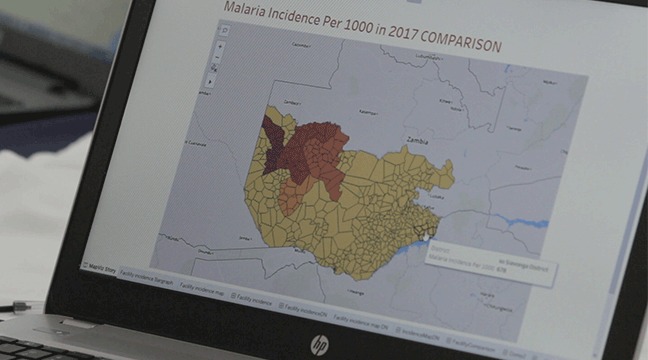A healthcare worker in rural Zambia uses a tablet to track malaria outbreaks in real time. A child arrives at a clinic in Tanzania and a nurse checks the electronic immunization record on a tablet, ensuring the child receives all needed vaccinations. A teenager in Vietnam with questions about sexual health pulls up Facebook on his smartphone and messages a trained peer educator for advice. While this sophisticated use of technology to improve health outcomes in low-resource settings may be surprising to some, it is increasingly commonplace in global public health.
Inspired by Bill and Melinda Gates’s 2019 Annual Letter in which they shared nine things that surprised them about global health and international development, we decided to compile a list of our own. Herewith, our own list of the five most surprising things about global digital health. Tell us yours @PATHtweets
Surprise #1: The connected health worker is a global priority.
In many places PATH works, digital technologies have been considered a luxury for health care workers. But now there is clear consensus that connected health workers are necessary to achieve ambitious global goals such as universal health coverage. This means ensuring health care workers have the skills and technology resources to use patient data for making better decisions, and delivering health information to more patients more efficiently through digital communications.
PATH is supporting the World Health Organization (WHO) to advance global digital health around the world through the WHO-PATH Strategic Collaboration on Innovation and Global Digital Health. This is just one of the activities we are undertaking to ensure health care workers at all levels have the digital tools they need to provide better care to more people.

A healthcare worker in Tanzania checks her smartphone. Photo: Trevor Snapp/PATH.
Surprise #2: Gender disparity in access to technology is persistent and prevents progress.
The GSMA’s Mobile Gender Gap Report 2018 revealed that there continues to be gender disparity in mobile phone ownership and use. On average, women in low- and middle-income countries are 10 percent less likely to own a mobile phone than men, which results in 184 million fewer women owning mobile phones. We know that mobile phones are an excellent means to transfer health information—for example, the MomConnect program in South Africa has reached 1.5 million pregnant women with information on prenatal and newborn care through text and WhatsApp messages—so this gap is particularly problematic as we work to improve health equity. To ensure even more women can be reached with important health information, implementers of digital health programs need to continue to look for ways to partner with government actors and corporations to address technology access barriers.
Surprise #3: Donors are moving from fragmentation to coordination.
Over the past decade, hundreds of digital health tools have been tested in separate pilot projects led by different organizations. Health care workers were often asked to inefficiently record data using multiple—often duplicative and unconnected—systems and tools. The launch of the Principles of Donor Alignment for Digital Health is a promise by the donors themselves to put an end to wasting resources on unsustainable, fragmented systems. It commits donors to changing the way that they engage: more coordination with each other and more collaboration with country ministries.

Health care workers in Tanzania are using digital tools to improve care. Photo: Trevor Snapp/PATH.
Surprise #4: On digital platforms, false information is drowning out accurate health information that could save lives.
Social media gives individuals all over the world a way to connect and find information. But, this does not always lead to improved well-being. YouTube, WhatsApp, and Facebook, are contributing to vaccine hesitancy by providing channels for individuals to spread false information about the dangers of vaccines. During the Ebola crisis in West Africa in 2014, tweets containing misinformation about prevention and cures were retweeted more than tweets containing accurate information. A challenge for health advocates in the years ahead is to use digital channels just as effectively to dispel myths and provide accurate information that allows individuals to make better health decisions for themselves and their families.

Government health workers in Zambia track malaria in real time with digital dashboards. Photo: PATH/Mapbox.
Surprise #5: The future is here! Technology approaches we could not have imagined a few years ago are saving lives today.
In Vanuatu, vaccines are being delivered by drone. In Zambia, digital dashboards allow government health managers to view the malaria situation in real time and make data-driven decisions. In India, a connected system is improving tuberculosis patient outcomes, with the potential to reach millions. And Tanzania is leading the way in the digital health revolution by harnessing digital tools and technology in a holistic manner to strengthen its entire national health system. These are just a few examples of how recent technology advances are providing new ways of reaching what were once hard-to-reach populations.
In 2019 PATH's digital team expects that we will continue to be surprised by what digital technology is able to achieve. Our wish, and personal challenge, for the year ahead is to ensure technology is not contributing to increased gaps in knowledge, health and well-being, but instead is reaching its promise to accelerate health equity worldwide.



